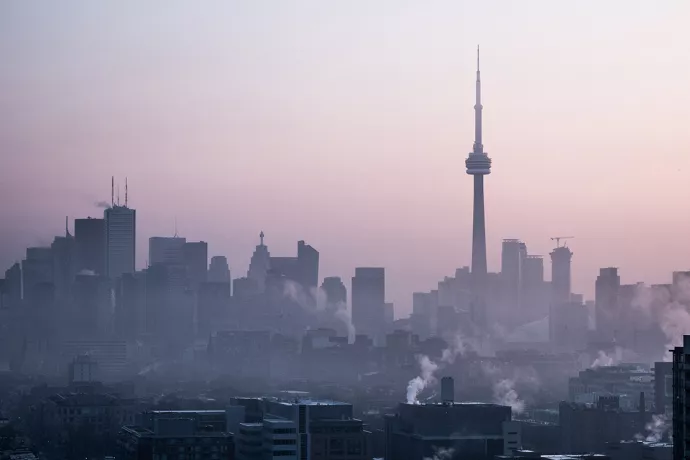
UTM professor’s air quality research to support Toronto’s COVID-19 recovery
As the City of Toronto strategizes its long-term response to COVID-19, it is tapping University of Toronto Mississauga geography professor Matthew Adams to learn how the pandemic’s deep disruptions to our way of life may be improving the air we breathe.
Adams, an assistant professor in UTM’s Department of Geography, Geomatics and Environment, is co-investigating how air quality has been affected by coronavirus-related changes to transportation patterns, energy use, and employment and industrial operations. The goal is to compare greenhouse gas emission levels from vehicle exhaust and other sources before and during the pandemic, and assess the implications for the environment and public health.

“The city is starting to rebuild, so it wants to understand what is going on with its air quality...and how it can use what it knows about reduced vehicles on the road to shape its climate action plans,” says Adams, who researches air contamination exposure in urban environments.
Called “Toronto Ambient Air Quality Impacts from COVID,” the study is a collaboration that includes
U of T chemical engineering professor Greg Evans, and two Ryerson University professors in aerospace engineering and public health. It is one of eight research projects introduced by a new partnership between the governments of Toronto, Ontario and Canada designed to support the city’s COVID-19 recovery through greater co-operation with Toronto’s higher education institutions.
Adams and his team will examine air pollution levels in Toronto from March to December 2020 captured by monitoring systems run by Evans’s lab at U of T’s St. George campus, the Ministry of the Environment and other sources. Data from air contamination sensors attached to satellites and highways will illuminate the extent of decongestion on city roads due to more of us working from home, government lockdowns and less industrial activity.
Adams has already answered some of these questions in his most recent study, “Air pollution in Ontario, Canada during the COVID-19 State of Emergency”. Published earlier this month on ScienceDirect, it revealed a reduction in nitrogen dioxide—which results from the burning of fossil fuels—across the province during a five-week period in the state of emergency that began last March, when compared with a previous five-week period pre-coronavirus.
Another factor that will come into play in the research is weather: understanding how air pollution levels during the pandemic change during the different seasons. As well, Adams says, their insights could shed further light on the possible connection between high levels of pollution and poor coronavirus patient outcomes in specific regions.
“A large proportion of Canadians live near major roadways, and we know the health issues that arise from exposure to transportation emissions,” Adams says. “Research like this provides evidence for promoting work-from-home policies and investing in public transportation and electrification.”
Read more:
